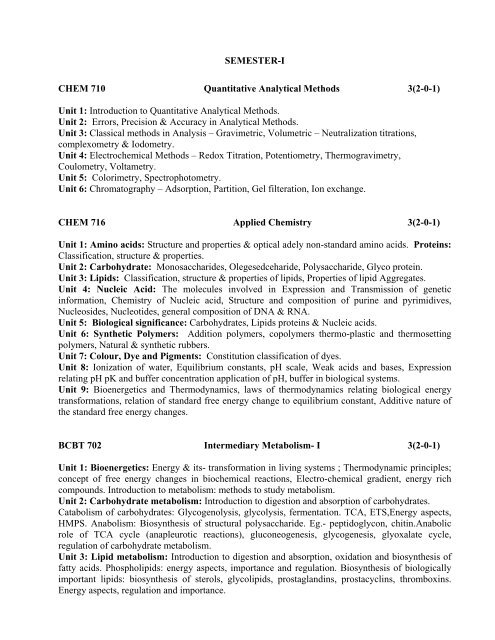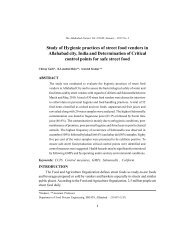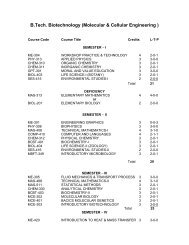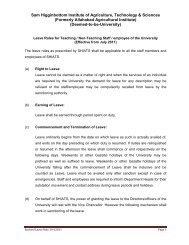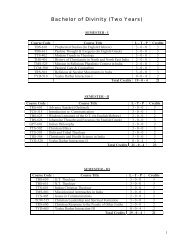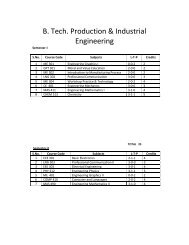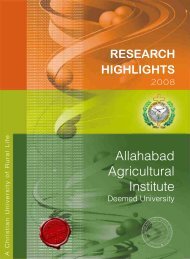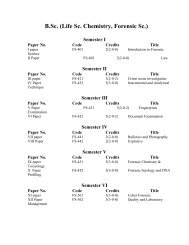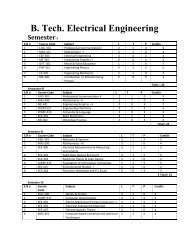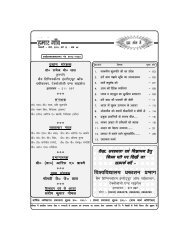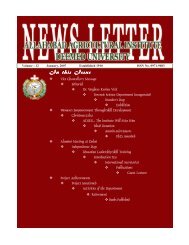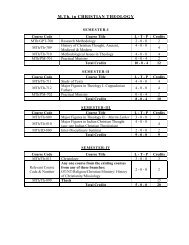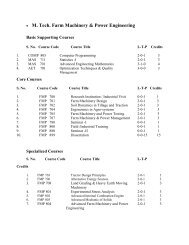M. Sc. BIOCHEMISTRY - Shiats.edu.in
M. Sc. BIOCHEMISTRY - Shiats.edu.in
M. Sc. BIOCHEMISTRY - Shiats.edu.in
Create successful ePaper yourself
Turn your PDF publications into a flip-book with our unique Google optimized e-Paper software.
SEMESTER-ICHEM 710 Quantitative Analytical Methods 3(2-0-1)Unit 1: Introduction to Quantitative Analytical Methods.Unit 2: Errors, Precision & Accuracy <strong>in</strong> Analytical Methods.Unit 3: Classical methods <strong>in</strong> Analysis – Gravimetric, Volumetric – Neutralization titrations,complexometry & Iodometry.Unit 4: Electrochemical Methods – Redox Titration, Potentiometry, Thermogravimetry,Coulometry, Voltametry.Unit 5: Colorimetry, Spectrophotometry.Unit 6: Chromatography – Adsorption, Partition, Gel filteration, Ion exchange.CHEM 716 Applied Chemistry 3(2-0-1)Unit 1: Am<strong>in</strong>o acids: Structure and properties & optical adely non-standard am<strong>in</strong>o acids. Prote<strong>in</strong>s:Classification, structure & properties.Unit 2: Carbohydrate: Monosaccharides, Olegesedceharide, Polysaccharide, Glyco prote<strong>in</strong>.Unit 3: Lipids: Classification, structure & properties of lipids, Properties of lipid Aggregates.Unit 4: Nucleic Acid: The molecules <strong>in</strong>volved <strong>in</strong> Expression and Transmission of genetic<strong>in</strong>formation, Chemistry of Nucleic acid, Structure and composition of pur<strong>in</strong>e and pyrimidives,Nucleosides, Nucleotides, general composition of DNA & RNA.Unit 5: Biological significance: Carbohydrates, Lipids prote<strong>in</strong>s & Nucleic acids.Unit 6: Synthetic Polymers: Addition polymers, copolymers thermo-plastic and thermosett<strong>in</strong>gpolymers, Natural & synthetic rubbers.Unit 7: Colour, Dye and Pigments: Constitution classification of dyes.Unit 8: Ionization of water, Equilibrium constants, pH scale, Weak acids and bases, Expressionrelat<strong>in</strong>g pH pK and buffer concentration application of pH, buffer <strong>in</strong> biological systems.Unit 9: Bioenergetics and Thermodynamics, laws of thermodynamics relat<strong>in</strong>g biological energytransformations, relation of standard free energy change to equilibrium constant, Additive nature ofthe standard free energy changes.BCBT 702 Intermediary Metabolism- I 3(2-0-1)Unit 1: Bioenergetics: Energy & its- transformation <strong>in</strong> liv<strong>in</strong>g systems ; Thermodynamic pr<strong>in</strong>ciples;concept of free energy changes <strong>in</strong> biochemical reactions, Electro-chemical gradient, energy richcompounds. Introduction to metabolism: methods to study metabolism.Unit 2: Carbohydrate metabolism: Introduction to digestion and absorption of carbohydrates.Catabolism of carbohydrates: Glycogenolysis, glycolysis, fermentation. TCA, ETS,Energy aspects,HMPS. Anabolism: Biosynthesis of structural polysaccharide. Eg.- peptidoglycon, chit<strong>in</strong>.Anabolicrole of TCA cycle (anapleurotic reactions), gluconeogenesis, glycogenesis, glyoxalate cycle,regulation of carbohydrate metabolism.Unit 3: Lipid metabolism: Introduction to digestion and absorption, oxidation and biosynthesis offatty acids. Phospholipids: energy aspects, importance and regulation. Biosynthesis of biologicallyimportant lipids: biosynthesis of sterols, glycolipids, prostagland<strong>in</strong>s, prostacycl<strong>in</strong>s, thrombox<strong>in</strong>s.Energy aspects, regulation and importance.


